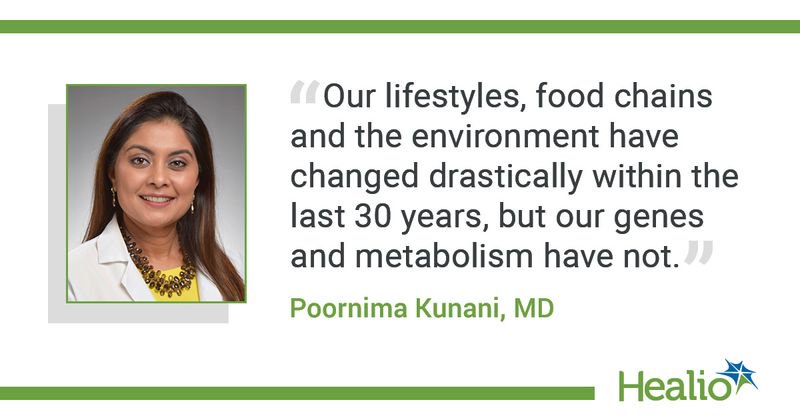Around 4% of adolescents meet AAP criteria for bariatric surgery
Click Here to Manage Email Alerts
Key takeaways:
- The AAP endorses metabolic and bariatric surgery for certain children with obesity.
- Around 4% of adolescents in the United States meet the AAP’s criteria.
Around 4% of adolescents in the United States meet the AAP’s eligibility criteria for metabolic and bariatric surgery, according to findings published in Pediatrics.
Last year, the AAP published new clinical practice guidelines that endorsed the use of metabolic and bariatric surgery (MBS) as part of a comprehensive treatment strategy for adolescents with class III obesity or class II obesity and some specific comorbidities.

“We undertook this analysis as part of our plan to implement current recommended guidelines,” Poornima Kunani, MD, regional lead for pediatric weight management at Kaiser Permanente South Bay Medical Center, told Healio about the new study.
Kunani and colleagues enrolled children aged 12 to 17 years from their health system who had a measured BMI and classified them as having class I, II, or III obesity, excluding patients with current or recent pregnancy.
Among the 603,041 adolescents included in the study, 22.2% had obesity, with 12.9% classified as class I, 5.4% as class II, and 3.9% as class III. In the cohort of adolescents with class II obesity, 9.1% had one or more comorbidities qualifying for MBS.
In all, 4.4% of adolescents met the eligibility criteria for MBS, Kunani and colleagues reported. Males, Black and Hispanic adolescents, and those living in more deprived neighborhoods more likely to meet the criteria, they found.
Kunani said the results were not surprising because “the numbers of children and teens with severe obesity increase each passing year.”
Still, the actual number of adolescents in the U.S. who undergo MBS each year — 1,700 — is far lower than the estimated 970,000 to 1.1 million who are eligible for it, Kunani and colleagues said.
“We were also not surprised at the low numbers of eligible teens actually going through with surgery,” Kunani said. “It’s a tough decision for parents and teens to make, especially given the rigorous post-op regimens, lifelong need for supplementation, and possibility of needing a revision procedure in the future.”
She added that few centers offer intensive health behavior and lifestyle treatment or adolescent MBS, “so access to these services is still an issue.”
“As a pediatrician, I see children with increasingly complex caregiver arrangements and increasing mental health burdens, as well as parents dealing with their own health struggles, including obesity,” Kunani said. “This makes the delivery of intensive health behavior and lifestyle treatment even more challenging, even though this is the backbone of our treatment strategy.”
Kunani encouraged parents and caregivers to “really think deeply of the actual long-term health effects of convenient packaged foods, fast food, and the vast array of liquid beverages being offered to children,” as well as too many hours in front of a screen.
“Our lifestyles, food chains and the environment have changed drastically within the last 30 years, but our genes and metabolism have not,” Kunani said. “Most children with obesity will continue to have obesity as adults with an increasing health risk burden to themselves and society. We spend large amounts of money trying to treat co-morbidities of obesity in adults. There is much value in addressing all these health risk behaviors in childhood and adolescence.”
In an accompanying commentary, Marc P. Michalsky, MD, MBA, professor of pediatric surgery at the Ohio State University College of Medicine, and Janey Pratt, MD, from the division of pediatric surgery at Stanford University School of Medicine, noted that the failure to recognize and treat severe obesity is “leaving the current generation of children extremely vulnerable to the cumulative impact of untreated disease.”
“In most pediatric patients meeting BMI eligibility criteria for MBS, surgery will be delayed by limited access to MBS programs, insurance denials, or simply never being referred,” they wrote. “The opportunity for a health system like that studied here is immense: As an integrated care system, the institution of standard screening for comorbidities based on BMI and standard referrals to advanced therapies such as MBS could become a reality.”
References:
Michalsky MP, et al. Pediatrics. 2024;doi:10.1542/peds.2023-06437.
Shapiro WL, et al. Pediatrics. 2024;doi:10.1542/peds.2023-063916.
